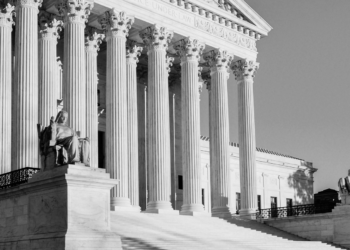While most individuals have probably heard of Snapchat, it is no secret that the application is geared toward youth. According to an article in Business Insider, “Snapchat is facing 2 big growth barriers, and the stock is sinking because of it,” Snap Inc. CEO Evan Speigel does not plan on strategizing to appeal to older users. The article goes as far as to acknowledge the difficulty that the application presents to unfamiliar users; “ … the product is reputed to be impossible to use for older users who find its interface baffling and its content of puking-rainbow filters juvenile.”
Still, like Facebook, Twitter and Instagram, Snapchat can provide a virtual treasure trove of evidence for today’s litigators. Thus, it is crucial for attorneys to have an adequate understanding of the new favorite social platform of teenagers.
What Is Snapchat?
Snapchat is an image messaging and multimedia mobile application that enables users to create, send and receive content which then “disappears” at a pre-determined interval. Unless affirmatively saved or screen-shotted, Snaps or Chats typically expire aft er being opened or aft er 24 hours if the creator posts the Snap or Chat to his or her Story. It is this ephemeral component of Snapchat that distinguishes it from similar forms of social media, complicating the ability to obtain its content.
In 2017, according to the study, “135 Amazing Snapchat Statistics and Facts,” approximately 301 million monthly users share an average of 9,000 Snaps per second. Further, according to a recent poll conducted by PiperJaffray, 39 percent of teenagers prefer Snapchat, while 23 percent favor Instagram, and only 11 percent prefer Twitter and Facebook, respectively.
Legal Impact
The legal system has also experienced a considerable rise in the prevalence and use of evidence derived from Snapchat. The company’s website contains a guide for law enforcement officers explaining the type of information that can be obtained, as well as the process by which the materials must be requested. In compliance with the Electronic Communications Privacy Act, Snapchat will provide basic subscriber information in response to a subpoena, court order or search warrant.
Snapchat deletes every Snap and Chat from its servers once opened. Thus, the content of a Snap or Chat is only available for production if (1) the Snap or Chat remains unopened and (2) it is properly requested for and captured within the 30-day period it remains on the Snapchat servers. Even if the content is unavailable on the company’s servers, Snapchat will provide meta-data logs for the prior 31 days of a user’s Snaps or Chats, for 24 hours of posted stories, and for any unopened chats or those saved by a sender or recipient.
Snapchat’s limited ability to provide requested material should not deter litigators from pursuing the information through other legitimate means. For instance, some digital forensic examiners have touted the use of reverse-engineering to extract previously opened Snaps and Chats directly from the hardware of the electronic device used for creation and/or receipt, according to the article, “Yes, You Can Recover Dead Snapchats – And Here’s the Video Proof.” Additionally, there are myriad third-party programs claiming similar capabilities.
Yet, completely independent from procedural compliance, remains the modest screenshot. Lawyers and courts have routinely relied on screenshots of Snaps and Chats as admissible evidence. In July 2016, a Massachusetts jury found two individuals guilty of assault with intent to commit rape with the aid of screenshots from a Snap, which the assailants created to record the attack.
Similarly, in 2017, a Pennsylvania jury convicted Maxwell Morton of murder based upon a Snap that Morton had sent to a third-party depicting the crime. This individual took a screenshot of the Snap message before his mother contacted the police and stated, as quoted in the Toronto Sun, “You probably won’t believe this, but we have a Snapchat of the murder.” Before sentencing Morton to 15 to 30 years in prison, according to the article, “Jeannette ‘selfie’ killer gets up to 30 years in prison,” Common Pleas Court Judge Meagan Bilik- DeFazio stated, “The reality is this case would be very different but not for that photograph.”
Other examples of legally significant screenshots include those which utilize the “speed filter” of Snapchat. In 2016, a plaintiff from Georgia (albeit unsuccessfully) sued both the driver of a high-speed crash as well as Snap Inc., based on negligence. The complaint was supported by the driver’s intention to post a Snap documenting her vehicle traveling at 107 mph via Snapchat’s built-in speedometer function.
Conclusion
It is reasonable to expect a direct correlation between the increased popularity of Snapchat and the plethora of invaluable information that will be communicated through the application. Today’s litigators must be cognizant of the unique investigative and evidentiary capabilities, including the different means of preserving and obtaining the evidence. Brad S. Wolfe









